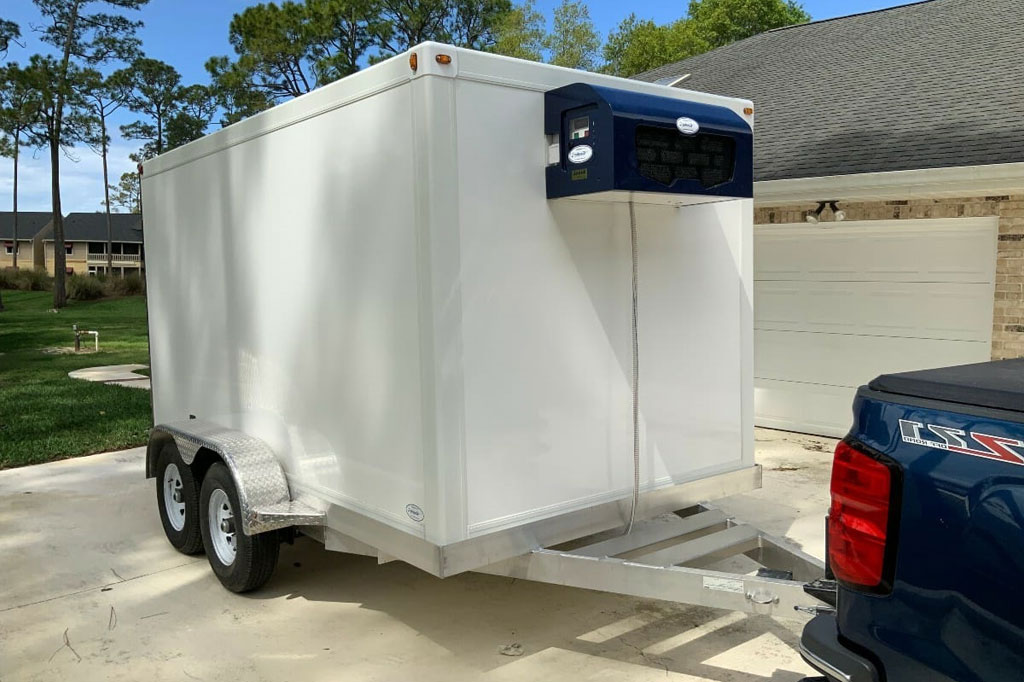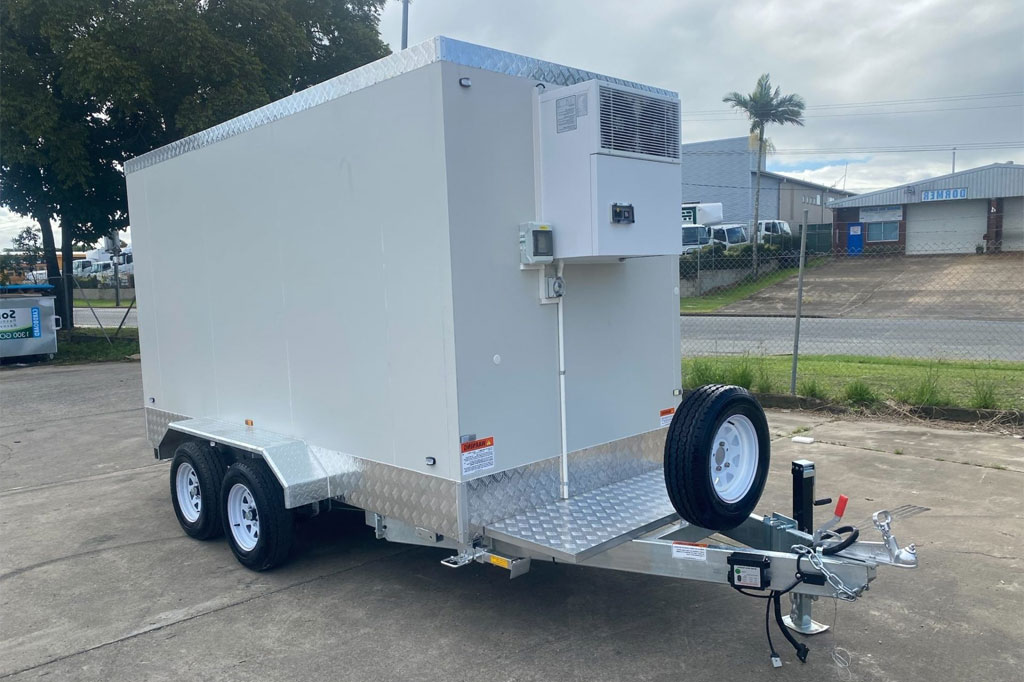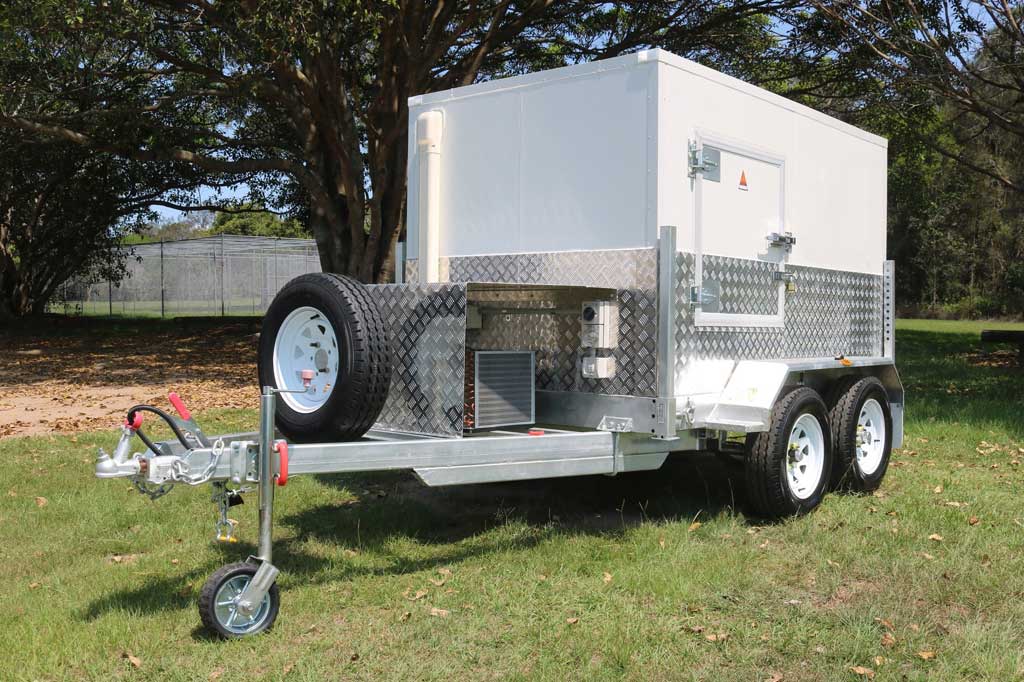In the aftermath of a disaster, effective response efforts are critical to save lives, provide shelter, and deliver vital resources to those affected.
Among the most crucial resources are perishable goods, such as food, vaccines, and medical supplies, which require proper storage to maintain their efficacy and safety.
Trailer-mounted cold rooms play an indispensable role in these emergency situations, offering portable, flexible, and reliable cold storage solutions for disaster relief operations.
What Are Trailer-Mounted Cold Rooms?
Cold rooms mounted on a trailer are refrigerated units designed to transport and store perishable goods in a variety of environments. These mobile cold storage units are usually placed on trailers, making them easily transportable to areas affected by disasters.
They come in a range of sizes and configurations, including those that offer refrigeration or freezing capabilities, depending on the type of goods that need to be stored.
Importance of Cold Storage in Disaster Relief
Perishable goods like food, vaccines, and medical supplies are vital to disaster relief efforts, but their effectiveness is often time-sensitive. Without proper temperature control, these resources can spoil, become ineffective, or even pose a health risk to affected populations.
Cold storage is especially important in the following categories:
- Food Aid: In disaster zones, access to fresh food is often limited. However, humanitarian aid agencies rely on shipments of perishable food items to help feed displaced or affected populations. Refrigerated storage helps maintain the freshness and safety of these items, minimizing the risk of foodborne illnesses that could worsen the situation for vulnerable populations.
- Vaccines and Medical Supplies: Many medical treatments, including vaccines, biologics, and other medications, need to be kept at precise temperatures to remain effective. Trailer-mounted cold rooms help maintain the cold chain, ensuring that vaccines and medical supplies are stored at optimal temperatures throughout their journey to disaster zones. Without refrigeration, vaccines may lose their potency, rendering them useless in preventing disease outbreaks.
- Blood and Plasma Storage: Blood donations are critical in disaster relief operations, especially in the aftermath of events like earthquakes, floods, or major accidents. Trailer-mounted cold rooms can be used to store donated blood and plasma until they are needed, preventing spoilage and ensuring that these life-saving products are available when required.
Advantages of Trailer-Mounted Cold Rooms in Disaster Relief

- Mobility and Flexibility: One of the key benefits of trailer-mounted cold rooms is their mobility. In a disaster, impacted areas may be hard to reach due to damaged infrastructure, destroyed roads, or continuing hazards. These mobile cold storage units can be easily transported to the site of the disaster, providing on-the-ground refrigeration wherever it is needed most.
- Scalability: Cold room trailers are available in various sizes, allowing for flexible storage solutions that can be tailored to the scale of the disaster. Whether it’s a small-scale emergency requiring the storage of medical supplies or a large-scale operation necessitating the refrigeration of thousands of meals, trailer-mounted cold rooms can be scaled up or down to meet specific needs.
- Rapid Deployment: Speed is of the essence in disaster relief, and the ability to deploy cold storage quickly can make a significant difference in saving lives. Trailer-mounted cold rooms can be set up and operational within hours of arrival, minimizing the time-sensitive risk to perishable goods. Additionally, these units are often equipped with backup power systems, ensuring continuous refrigeration even during power outages.
- Cost-Effectiveness: Renting or leasing trailer-mounted cold rooms can be a more cost-effective solution than constructing permanent cold storage facilities in disaster zones. These mobile units eliminate the need for long-term investment in infrastructure, offering a practical and economical alternative for temporary cold storage in times of crisis.
- Customization: Many trailer-mounted cold rooms can be customized to meet the specific needs of a disaster relief operation. Features such as adjustable temperature settings, security locks, or even dual-zone configurations (for refrigeration and freezing) allow organizations to store a wide variety of goods in optimal conditions.
Use Cases of Trailer-Mounted Cold Rooms in Past Disasters

Trailer-mounted cold rooms have been instrumental in several major disaster relief efforts.
For instance, after the 2010 Haiti earthquake, international aid organizations deployed refrigerated trailers to store vaccines, medical supplies, and food aid. Similarly, during the COVID-19 pandemic, mobile cold storage units were used to transport and store vaccines, which required precise temperature control to remain effective.
In both cases, the mobility and scalability of trailer-mounted cold rooms allowed for rapid deployment and effective cold chain management, directly impacting the success of relief operations.
Key Considerations for Using Trailer-Mounted Cold Rooms
While trailer-mounted cold rooms offer significant benefits, several factors should be considered for their successful implementation:
- Power Supply: It is essential to ensure that the cold room units have reliable power sources. Many cold rooms are equipped with generators, but in some cases, additional fuel or access to a grid connection may be necessary to keep temperatures stable.
- Location: The placement of cold rooms should be strategically planned, as extreme weather conditions (such as heat or humidity) can affect the functionality of refrigeration units. Adequate ventilation and access to transportation routes are also critical for the efficient use of these units.
- Logistics and Distribution: To ensure that perishable goods reach those in need, trailer-mounted cold rooms must be part of a larger logistics and distribution strategy. Coordinating the transport of these units, as well as the distribution of stored items, requires effective planning and resources.
